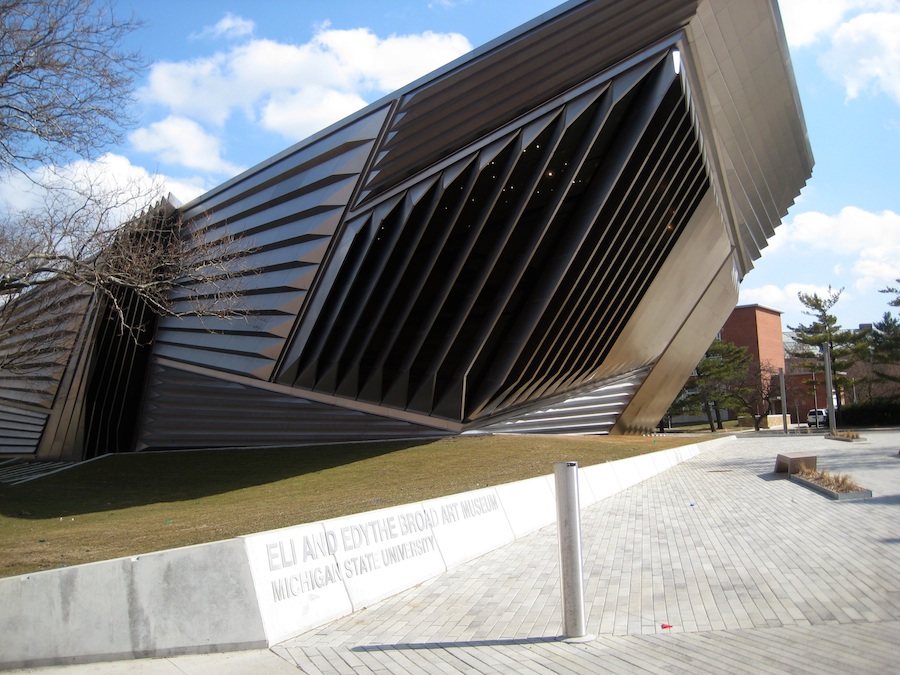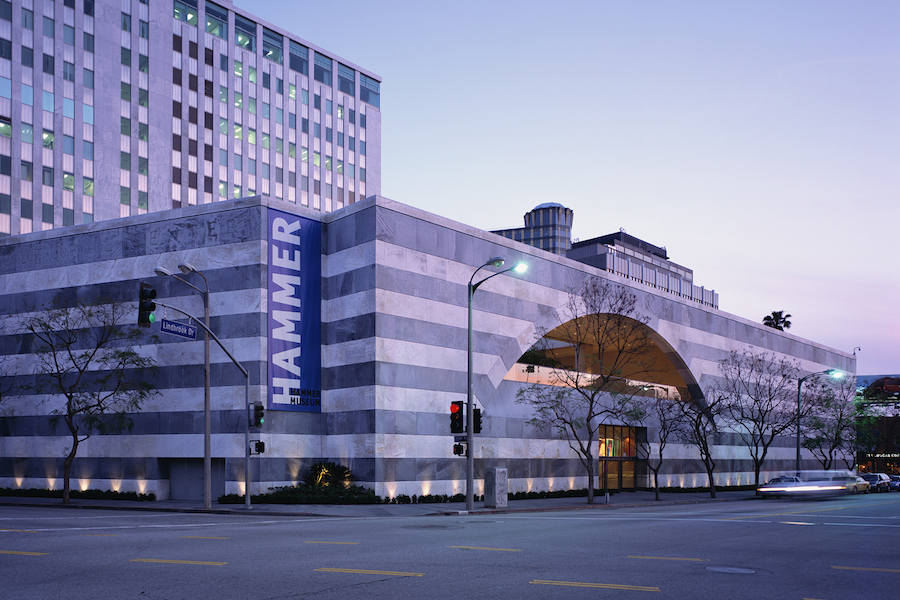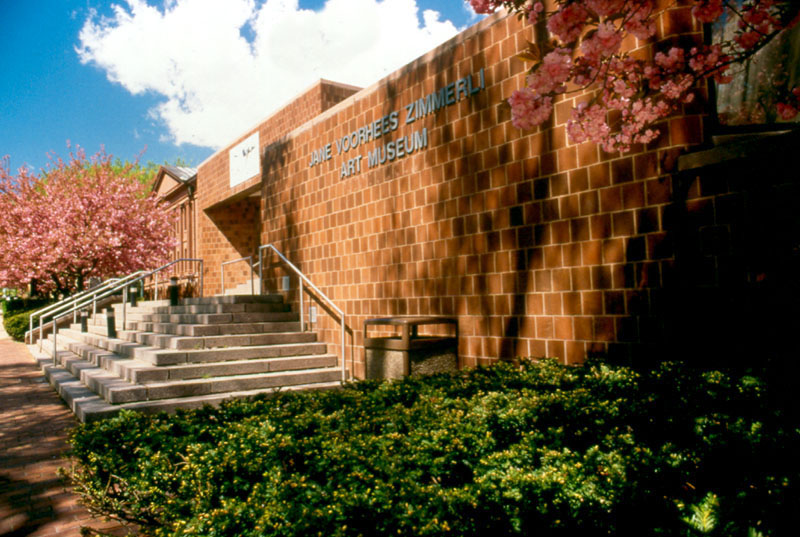Top 10 University Art Museums in the US
RISD Museum of Art

- Image via flickr.com.
The Rhode Island School of Design Museum of Art contains a whopping 100,000 objects, from ancient art to work by contemporary artists and designers and is, unsurprisingly, one of the largest university art museums in America. The museum is an integral part of the prestigious art and design school, as well as a principal art museum for the greater state of Rhode Island and New England.
Eli and Edythe Broad Art Museum at Michigan State University
Designed by Pritzker Prize-winning architect Zaha Hadid, “The Broad” opened in 2012. Featuring a striking and eccentric façade of pleated stainless steel and glass, the museum’s highlights include Greek and Roman antiquities, works from Medieval and Renaissance masters, Old Master paintings, 19th-century American paintings, and 20th-century sculpture. Almost three-quarters of the 46,000-square-foot building is dedicated exhibition space. Eli and Edythe Broad, the museum’s namesakes, were longtime supporters of MSU and provided the lead gift for the museum.
Hammer Museum at UCLA
The Hammer Museum, founded by Dr. Armand Hammer and designed by architect Edward Larrabee Barnes, opened in 1990. After the passing of its founder, the museum partnered with UCLA and has since built an international reputation for its thematic contemporary exhibitions, scholarly historical exhibitions, and its special emphasis on contemporary works of art.
Harvard Art Museums
The Fogg Museum, Busch-Reisinger Museum, and Arthur M. Sackler Museum are all part of the Harvard University museum network. They have played a leading role in the development of art history, conservation, and conservation science at the institution. All three museums have a history, collection, and identity all their own. The Fogg Museum, a joint art museum and teaching facility, was the first purpose-built structure for the specialized training of art scholars, conservators, and museum professionals in North America. It is renowned for its holdings of plaster casts, photographs, Western paintings, sculpture, decorative arts, photographs, prints, and drawings dating from the Middle Ages to present day. The Busch-Reisinger Museum was founded as the Germanic Museum, and is dedicated to the study of all modes and periods of art from central and northern Europe, emphasizing German-speaking countries. The Arthur M. Sackler Museum is dedicated to works from Asia, the Middle East, and the Mediterranean.
Yale University Art Gallery
Located in New Haven, Connecticut, the Yale University Art Gallery houses an astounding 200,000 objects in its permanent collection. Its architecture is just as impressive as its artistic offerings. The modernist entrance building, designed by renowned architect Louis Kahn, the Old Yale Art Gallery and the neo-Gothic Street Hall were all united in a 2012 renovation by Ennead Architects, led by Ennead Design Partner Richard Olcott and Management Partner Duncan Hazard. The collection dates back to 1832 and the museum's encyclopedic holdings include American decorative arts, early Italian Renaissance paintings, and the largest coin collection held by any American university.
Bowdoin College Museum of Art
The Bowdoin College Museum of Art is the cornerstone of the arts and culture at the college. Though the college is small, its collection of art is mighty. The BCMA is one of the oldest collegiate art collections in the country. It began through the 1811 bequest of James Bowdoin III of 70 European paintings and a portfolio of 140 master drawings. The collection has expanded significantly and now houses more than 20,000 paintings, sculpture, works on paper, decorative arts, and artifacts from prehistory to the present from civilizations spanning the globe. The antiquities collections at the BCMA contain over 1,800 Assyrian, Egyptian, Greek, Roman, and Byzantine objects and is one of the most comprehensive compilation of ancient art in any small college museum. Other highlights include European art, Renaissance, and Baroque works, an American collection as well as Asian, African, Pacific, Pre-Columbian, and Native American holdings.
Weisman Art Museum at the University of Minnesota
Known to students as the “modern art museum,” over 20,000 objects are on permanent display at the Weisman Art Museum, ranging from prehistoric art, Korean furniture, and paintings by Georgia O’Keeffe. The museum’s offerings have expanded beyond the building’s walls – public art covers more than 30 acres around the University of Minnesota’s campus. Students might see artwork pop up by building entrances, in hallways, or installed in courtyards. Designed by architect Frank Gehry, the building is simultaneously accessible, functional and immediately intriguing. Gehry won the prestigious Progressive Architecture Design Award in 1991.
Zimmerli Art Museum - Rutgers
The Zimmerli Art Museum collects, preserves, researches, and exhibits world-class works of art, providing Rutgers University with an exceptional direct experience with the visual arts. The Jane Voorhees Zimmerli Art Museum was established in 1983 in response to the rapid growth of the Rutgers University Art Gallery. The major benefactors of the museum were Ralph and Alan Voorhees, whose mother is the museum’s namesake. The 70,000-square-foot facility houses an expansive collection of 60,000 works of art. The museum’s French art holdings from the 19th century, as well as its Russian and Soviet Nonconformist Art are major draws for visitors.
Cantor Arts Center at Stanford University
The Cantor Arts Center was conceived in tandem with Stanford’s founding. The Stanford family had traveled the world collecting objects of art and cultural interest, so a museum was created to make this collection available to students and the public. After multiple earthquakes damaged the building and its collection, the museum was fully restored and revitalized. In 1998, the Cantor Arts Center was expanded through a project led by Design Partners Richard Olcott and James Stewart Polshek of Ennead Architects (formerly Polshek Partnership). Olcott also designed the Anderson Collection at Stanford University, a gallery for a prized collection of significant 20th-century art, which opened in 2014. One of the most famous aspects of the Cantor Arts Center is the Rodin Sculpture Garden, which is the largest Rodin collection outside of Paris itself.
Allen Memorial Art Museum at Oberlin in Ohio
Founded almost a century ago in 1917, the Allen Memorial Art Museum’s collection is housed in a gorgeous Italian Renaissance-style building designed by Cass Gilbert. Named after Dr. Dudley Peter Allen, a distinguished graduate of Oberlin College from 1875, this museum has exceptional holdings in European and American paintings and sculpture from the 15th century to modern day, Asian works of art including a large group of ukiyo-e prints, and the Eva Hesse archives, comprised of her notebooks, diaries, photographs, and letters. The museum also oversees the Weltzheimer/Johnson house, designed by Frank Lloyd Wright. Students can actually rent up to two pieces of art each semester, for just $5 per work of art! Who could pass up an opportunity like that?








































